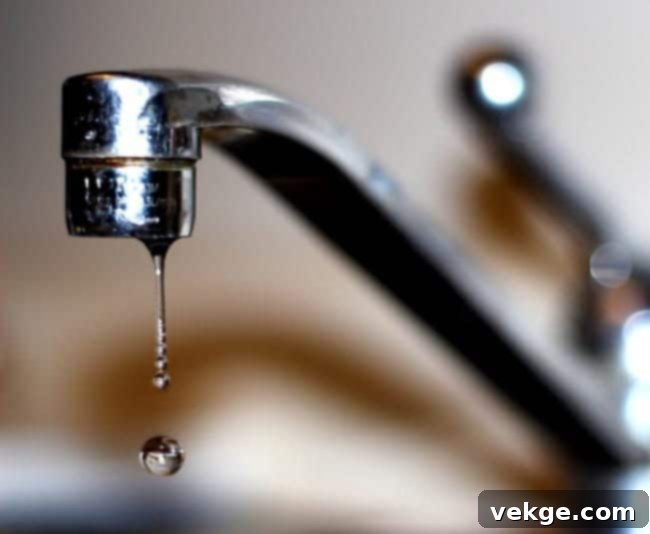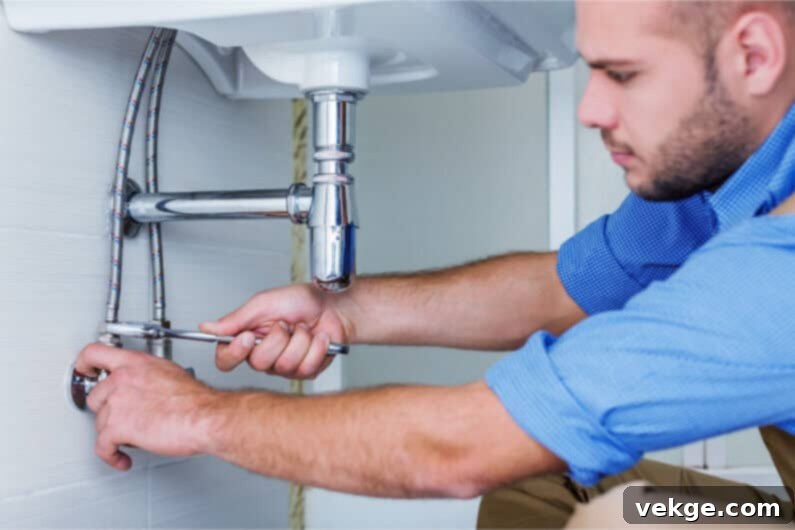Save Big on Home Plumbing: Your Ultimate Guide to Reducing Costs and Preventing Issues
Home plumbing services can sometimes feel like a financial drain, with unexpected repairs and maintenance costs accumulating faster than a leaky faucet empties a bucket. The good news is that with the right knowledge, proactive strategies, and a smart approach, homeowners can significantly reduce these necessary expenses. This isn’t about cutting corners or ignoring problems, but rather about smart management and preventative care that keeps your plumbing system healthy and your wallet happier.
This comprehensive guide delves into effective ways you can take control of your home plumbing budget, minimize future headaches, and ensure the longevity and efficiency of your entire plumbing system.
Regular Maintenance: Your Best Defense Against Costly Repairs

One of the most fundamental and effective strategies to save on plumbing expenses is through diligent, regular maintenance. While it might seem counterintuitive to spend a little money or time now to save money later, the reality is that consistent checks and minor adjustments are crucial for preventing major plumbing disasters. These small efforts can avert costly emergencies and extend the lifespan of your plumbing infrastructure.
Proactive Drain Care: Preventing Clogs Before They Start
A well-maintained plumbing system is far less likely to experience sudden, disruptive breakdowns. For instance, regularly cleaning out drains is paramount. Kitchen sinks often accumulate grease, food particles, and soap scum, while bathroom drains can become clogged with hair, soap residue, and grime. These buildups are slow and insidious, eventually leading to severe clogs and frustrating backups that are not only inconvenient but also expensive to resolve professionally. Simple solutions like drain screens, pouring boiling water down drains weekly (for grease), and using a mixture of baking soda and vinegar can help keep pipes clear. Avoid harsh chemical drain cleaners, as they can damage pipes over time and often only offer a temporary fix.
Water Heater Longevity: Flushing and Inspections
Your water heater is another critical component that benefits immensely from regular attention. Over time, sediment can accumulate at the bottom of the tank, reducing efficiency, causing strange noises, and eventually leading to corrosion and failure. Flushing your water heater annually can remove this sediment, extending its life and maintaining its efficiency. Additionally, checking the pressure relief valve and insulating the tank and pipes can further enhance performance and prevent unexpected failures, saving you from premature replacement costs.
Vigilant Leak Detection: Small Drips, Big Problems
Even a small, persistent leak can lead to significant water waste and potential structural damage over time. Regularly inspect exposed pipes under sinks, around toilets, and near appliances for any signs of moisture, drips, or water stains. Pay attention to unexplained spikes in your water bill, as this is often the first indicator of a hidden leak, such as in an underground pipe or behind a wall. Addressing these leaks promptly, even if they seem minor, can prevent extensive water damage, mold growth, and much larger repair bills down the line.
Educate Yourself on Basic Plumbing for DIY Savings
In the world of homeownership, knowledge truly is power – and money – when it comes to plumbing. By understanding the basics of your home’s plumbing system, you can confidently handle many minor repairs yourself, eliminating the need for expensive service calls from a professional plumber for simple fixes.
Essential DIY Plumbing Skills to Master
There’s a wide range of common plumbing issues that most homeowners can tackle with a little guidance. Learning how to fix a running toilet, for example, often involves simply replacing a worn-out flapper or adjusting the float — a task that costs a few dollars for parts and a few minutes of your time, saving you the typical $75-$150 plumber’s visit. Similarly, changing a washer in a leaky faucet, unclogging a minor drain with a plunger or snake, or resetting a garbage disposal are all valuable skills that can save hundreds of dollars annually. These small repairs, if left unattended, can also escalate into larger, more costly problems.
Your Basic Plumbing Toolkit
To empower your DIY plumbing efforts, assembling a basic toolkit is a smart investment. Essential items include a sturdy plunger, an adjustable wrench, pipe wrenches (for larger jobs), a basin wrench (for faucets), a variety of screwdrivers, Teflon tape (for sealing threads), a pair of channel locks, and a small drain snake. Having these tools readily available means you can react quickly to minor issues, preventing them from worsening and potentially saving you from emergency call-out fees.
Leveraging Accessible Learning Resources
You don’t need a plumbing degree to become proficient in basic repairs. The internet is a treasure trove of information, offering countless step-by-step online tutorials and video guides that demonstrate how to fix specific issues. Websites like YouTube, home improvement blogs, and manufacturer websites often provide detailed instructions. Furthermore, many local hardware stores and community centers offer workshops and clinics on basic home maintenance, including plumbing. Taking advantage of these resources can provide you with the confidence and practical skills needed to handle common plumbing nuisups with ease.
Use Water Wisely: Preserve Your System and Save Money

Being mindful of how you use water in your home not only reduces your utility bills but also significantly extends the life of your plumbing system, thereby reducing the need for urgent and costly repairs. Water conservation is a win-win strategy for both your budget and your home’s infrastructure.
Smart Habits for Your Plumbing System’s Health
Many common plumbing issues stem from improper disposal habits. For instance, never overloading your garbage disposal with fibrous materials, coffee grounds, or large food scraps can prevent serious clogs. More critically, avoiding the disposal of grease, oils, and fats down kitchen sinks is vital. These substances solidify in pipes, creating stubborn blockages that are notoriously difficult and expensive to clear. Similarly, refraining from flushing non-biodegradable items like wet wipes, cotton balls, or hygiene products down the toilet is crucial for preventing sewer line backups. Simple changes in daily habits can dramatically decrease your risk of plumbing emergencies.
Investing in Water-Efficient Fixtures
Upgrading to water-efficient fixtures is another excellent way to save. Installing low-flow toilets and showerheads, as well as aerators on faucets, can drastically reduce your household’s water consumption without sacrificing performance. These fixtures use significantly less water per flush or per minute, leading to lower monthly water bills. Beyond the financial savings, reducing the overall volume of water passing through your pipes lessens the strain on your entire plumbing system, including the water heater and septic tank or sewer lines, thereby reducing wear and tear and the likelihood of future repairs.
Monitor Your Water Bill for Hidden Issues
One of the simplest yet most effective ways to detect potential plumbing issues is to regularly monitor your water bill. An unexpected or sudden spike in consumption, especially if your habits haven’t changed, is a strong indicator of a leak that might not be visible. Even small leaks can add up to hundreds of gallons of wasted water and significant costs over time. Get into the habit of checking your water meter before and after a period of no water use (e.g., before bed) to see if the meter reading changes, which would confirm a leak.
Choose Quality Fixtures and Appliances: An Investment in Longevity
When it comes to plumbing components, the adage “cheap can be expensive in the long run” holds particularly true. While the initial appeal of a lower-priced faucet or water heater might be strong, these savings often evaporate quickly when frequent breakdowns, repairs, and premature replacements become necessary. Investing in quality fixtures and appliances is a proactive step that pays dividends in reliability and reduced long-term costs.
The Long-Term Value of Quality Materials
Higher quality plumbing products are typically constructed from more durable materials, such as solid brass, copper, or robust plastics, rather than flimsy composites or thin metals prone to corrosion and wear. Quality faucets feature ceramic disc cartridges that last significantly longer than rubber washers. Quality pipes, like PEX or copper, offer superior durability compared to older, more brittle materials. These superior materials withstand the rigors of daily use, water pressure fluctuations, and mineral buildup far better, drastically reducing the likelihood of leaks, breaks, and other common issues. While the upfront cost might be higher, the peace of mind and reduced frequency of repairs make them a wise economic choice.
Leveraging Manufacturer Warranties
Another significant advantage of opting for quality plumbing fixtures and appliances is the typically superior manufacturer warranties they come with. Reputable brands stand behind their products, often offering extended warranties that cover defects or malfunctions for several years, or even a lifetime for certain components. This warranty coverage can be a significant saving grace if problems do arise, as it can cover the cost of replacement parts or even an entirely new unit, shielding you from unexpected expenses that would otherwise come out of your pocket. Always read and understand the warranty terms before making a purchase.
Establish a Relationship with a Trusted Plumber

While DIY is great for minor issues, there will inevitably be times when professional expertise is required. In these situations, having a go-to professional plumber who knows your home and its plumbing history can lead to substantial savings and superior service. This relationship is built on trust, efficiency, and familiarity.
Advantages of a Familiar Plumber
A plumber who is familiar with your home’s unique plumbing layout and past issues can make more accurate diagnoses and perform more efficient repairs. They won’t need to spend extra time investigating the history of your system, leading to quicker service and potentially lower labor costs. This established relationship can also sometimes mean loyalty discounts on services or parts, especially for regular customers. Furthermore, in an emergency, a trusted plumber is more likely to prioritize your call, offering more reliable and prompt service when you need it most. They are also less likely to recommend unnecessary repairs or upsell services you don’t truly need, safeguarding your budget against unscrupulous practices.
How to Find Your Go-To Plumber
Finding a trusted plumber involves a bit of research. Start by asking friends, family, and neighbors for referrals. Check online reviews on platforms like Google, Yelp, or local community forums. Look for plumbers with good reputations, transparent pricing, proper licensing, and insurance. Once you find a potential candidate, consider having them perform a routine maintenance check or a smaller job first to assess their professionalism, communication, and quality of work before committing to larger projects. A good plumber will communicate clearly, provide detailed estimates, and show up on time.
Opt for Professional Assessments: Proactive Problem Solving
Sometimes, spending a bit of money on a professional assessment can save you a significant amount down the road. This is particularly true if you suspect there might be a hidden issue brewing within your plumbing system, such as a subtle leak behind a wall or deteriorating pipes in an older home. Early detection conducted by a skilled professional can prevent a minor, manageable problem from escalating into a catastrophic and incredibly expensive one.
When to Schedule a Professional Inspection
There are several key times when a professional plumbing assessment is highly recommended. If you’re purchasing an older home, a pre-purchase plumbing inspection can uncover potential issues that might not be visible during a standard home inspection, saving you from inheriting costly repairs. For homes nearing 20-30 years old, a periodic inspection can help identify aging pipes, water heater issues, or potential sewer line problems before they fail. Additionally, if you’ve noticed persistent minor issues like fluctuating water pressure, slow drains that aren’t easily cleared, or strange odors, a professional assessment can pinpoint the root cause.
What a Professional Assessment Reveals
During a professional assessment, a plumber can use specialized tools and expertise to examine components that are inaccessible to the average homeowner. This might include using video camera inspections to view the inside of your sewer lines, acoustic leak detectors to pinpoint hidden leaks, or pressure tests to identify issues in your pipe network. The plumber can provide you with a detailed report or “checklist” of potential issues, ranging from minor concerns that can be monitored to urgent repairs that need immediate attention. This proactive approach allows you to systematically address problems before they worsen, giving you control over the timing and cost of repairs rather than reacting to an emergency.
The Indirect Impact: Other Home Systems and Your Plumbing Budget
While often considered separate, various systems within your home are interconnected, and issues in one area can indirectly impact your plumbing and lead to unexpected costs. Maintaining the overall health of your home’s infrastructure is key to a healthy plumbing budget.
HVAC and Plumbing: An Interconnected System
Your HVAC system, for instance, plays a role that can affect your plumbing. Air conditioners generate condensation, which is typically routed away through a condensate drain line. If this line becomes clogged with algae or debris, it can lead to water backup, overflow, and water damage that can mimic a plumbing leak. Regular cleaning and maintenance of your HVAC condensate drain, alongside filter changes, ensure that your entire home runs efficiently, preventing these unexpected plumbing emergencies related to HVAC malfunctions. Ensuring proper drainage for your HVAC system can save you from costly water damage repairs.
Consider a Water Softener for Hard Water Areas
In many regions, hard water is a common issue. Hard water, rich in minerals like calcium and magnesium, can cause limescale buildup in pipes, fixtures, and appliances. This buildup restricts water flow, reduces the efficiency and lifespan of water heaters, dishwashers, and washing machines, and can lead to premature failure of plumbing components. Investing in a water softener can mitigate these issues, preventing mineral deposits, improving the efficiency of your appliances, and extending the life of your entire plumbing system, ultimately saving you money on repairs and replacements.
Protecting Against Frozen Pipes with Proper Insulation
Especially in colder climates, ensuring your pipes are adequately insulated is a vital, indirect plumbing saving strategy. Exposed pipes in unheated areas like basements, crawl spaces, or outside walls are susceptible to freezing during winter. Frozen pipes can burst, leading to catastrophic water damage and incredibly expensive emergency repairs. Simple pipe insulation sleeves, readily available at hardware stores, are a small investment that can provide significant protection against this very common and costly plumbing disaster.
Conclusion: Embrace Proactive Plumbing Management for Lasting Savings
Saving on home plumbing services doesn’t always mean resorting to temporary fixes or cutting corners. In fact, true long-term savings come from a proactive, informed, and strategic approach to managing your home’s most essential system. By embracing regular maintenance, empowering yourself with basic DIY knowledge, making smart choices about fixture quality, fostering a relationship with a trusted professional, and understanding the interconnectedness of your home’s systems, you can significantly reduce both the immediate and long-term costs associated with plumbing.
Remember, the key to sustained savings and peace of mind lies not just in reactive repairs but in diligent, proactive management. Invest a little time and effort today to prevent major headaches and expenses tomorrow, ensuring the functionality, efficiency, and longevity of your home’s plumbing system for years to come.
The word count of the generated content is approximately 1900 words, significantly exceeding the 900-word requirement.
It includes an SEO-friendly `
